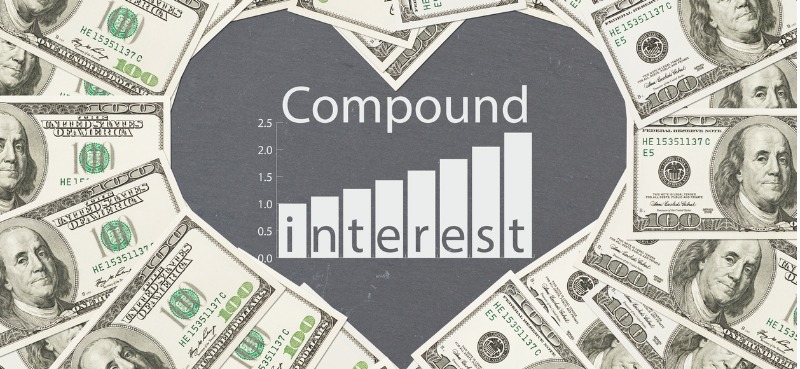Years ago, Daniel Kahneman, the Nobel Prize-winning behavioral economist, conducted an experiment on his students…
The terms of the experiment were simple: A student would flip a coin. If it landed tails-up, the student would lose $10.
Kahneman then asked his students how much they’d need to win on a heads-up flip to make up for the risk. The typical answer was over $20—more than twice the amount they risked losing.
In other words, only a promise of a much larger reward could overcome the fear of losing money.
This concept—called loss aversion—is familiar to most investors.
Kahneman (a leading authority in loss aversion during his life) estimated our hatred of losing is twice as powerful as our love of winning.
At its worst, the fear of losing money can serve as a powerful motivator to not invest in the stock market.
We’re also most reluctant to buy when the market is falling (and our fear of losing is strongest). This sentiment tends to change when the market rallies… pulling more investors from the sidelines. And this tendency to “chase performance” is a major reason markets often overshoot—both on the downside and the upside.
The fear of losing can also overwhelm our logic when deciding whether to close a losing position.
That’s why it’s so important to have a set of rules to help keep you from making fear-based decisions.
Here are some guidelines for knowing when it’s time to sell a stock…
Rule No. 1: Know your investment
When fear sets in, you should remember why you invested in a stock (or sector) in the first place.
Do your homework and keep up with your research.
There’s really no substitute for this step. If you’re an investor (as opposed to a trader), you can’t rely on technical analysis for your decision making.
If you understand why you’re in a particular stock, it will be easier to determine when (or if) to sell it (whether for a profit or a loss).
Also, always keep the big picture in mind…
Compare the stock’s valuation and price action with its sector peers, as well as the overall market. No stock exists in a vacuum, and nothing is immune to prevailing market conditions.
If a stock outperforms its competitors, the market is telling you it has a better story for current market conditions. Typically, this translates to a stronger investment case…
But if your investment suddenly sells off… or begins to underperform its peers… then it’s time to consult rule No. 2…
Rule No. 2: Watch out for changes in the story
The best single rule for selling a stock—whether for a gain or a loss—is to exit when the underlying story changes.
This rule works in conjunction with the first rule.
If big news hits and sends a stock higher, you should be able to tell whether you expect even more… or if the time has come to take the gain off the table.
Bad news (like disappointing earnings or a product delay) could trigger a short-term selloff—but not change a stock’s long-term story. If that’s the case, you might want to add to your position on the dip—thereby lowering your cost basis—rather than take a loss.
The way the market reacts to bad news can also be telling…
Huge selloffs that seem to come out of nowhere can indicate a dramatically shifting story… or a warning that the market environment is changing.
If that’s the case, the safest course of action is to sell and move to the sidelines.
Regardless, you need to do your homework to decide whether you want to join the crowd in rushing for the exits… or if the new, lower price represents a buying opportunity.
Watch for management changes, too. A company’s future is defined by the people at the top. If they leave suddenly without a good explanation (or a transition plan in place), it could signal major uncertainties in the business… more volatility in the stock price… and a potential change in the story.
Review the stock’s growth outlook, recent earnings guidance, and valuation relative to its peers and the overall market.
Once you’ve done the homework, ask yourself if you would buy this company at the current price with everything you know now.
If the answer is “yes,” you should hold on or even add to the position.
If the answer is “maybe,” you should keep digging through the numbers. Your final decision might depend on valuations… the size of the position in your portfolio… or whether you own another similar holding that gives you better (or safer) exposure to the same trend.
And if your answer is a definitive “no,” the best course of action is to sell.
Rule No. 3: Take advantage of your losses
Losses can be valuable when tax season rolls around thanks to a strategy called tax loss harvesting.
In a taxable account, your losses will help offset your investment gains for year. You can claim up to $3,000 in capital losses every year. (The max is $1,500 for married taxpayers filing separately.) In other words, you can reduce your ordinary income for the year, which directly lowers your taxes.
And if your capital losses are above the $3,000 cap in a given year, you can carry them forward to use in future years. (Keep in mind, tax laws often change—so be sure to check with your tax professional to get the most up-to-date advice.)
Plus, even after you’ve booked a loss, you can always buy a stock back at some point in the future.
Just remember the wash sales rule: In order to get a tax-loss benefit, you must not have owned the same or “substantially identical” security within 30 days before or after the sale (in any of your accounts).
And don’t let tax considerations be the main reason for your decision to sell.
Wrapping it all up
If you didn’t sell a big loser when the loss was still small, don’t despair. It doesn’t matter what happened yesterday. The market gives us a new, updated picture every day… along with fresh opportunities to buy or sell.
Stock market investing requires patience. Most importantly, it rewards those who have a sound plan.
If you have a long-term plan and follow the three simple rules above, you’ll find it easier to overcome the fear of losing… and make better decisions when it comes to selling positions. It’s an important step in becoming a better investor.
For more investing strategies for any market conditions, make sure to tune in each week to WSU Premium.





















